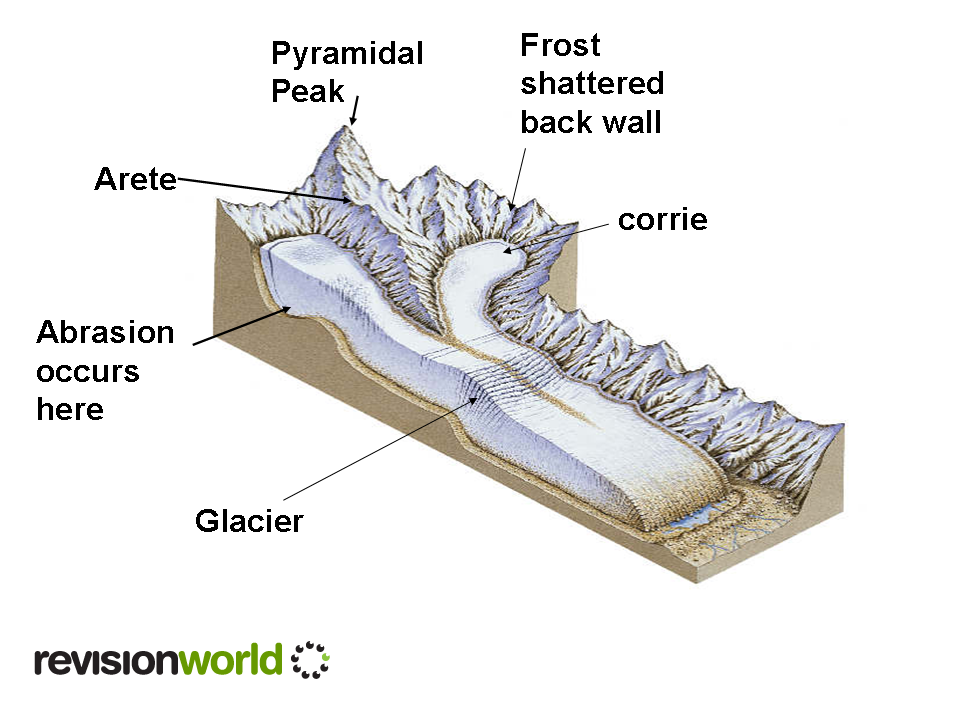Glacial Erosion
Plucking
As the glacier moves, friction causes the bottom of the glacier to melt this water freezes into joints in the rock. When the glacier moves again the rock is pulled away or ‘plucked’ from the base of the valley.
Abrasion
Rock pieces that have been plucked away and carried by the glacier (moraine) act like sandpaper scraping away at the valley bottom and sides.
Freeze – thaw or frost shattering
Water enters into cracks in the rock over time it freezes and repeatedly thaws putting large amounts of pressure on the rock – eventually this will force the rock to break apart or shatter.
This video looks at Glacial Eroison and shows how the landforms are created
Glacial Landforms
The landforms created by glacial erosion are:
- Corries
- Arêtes
- Pyramidal Peaks
- U Shaped Valleys or glacial troughs
- Truncated Spurs
- Hanging Valleys
Corrie
A Corrie is an armchair shaped depression with a steep back wall and a shallow rock lip
- Formed in high mountain areas where glaciers start
- Snow collects in a small hollow
- Over time it compacts and turns to ice
- As the ice starts to move then it plucks rocks from the back wall
- At the base of the bowl the ice scours the rock away through abrasion
- A rock lip is formed as the ice starts to move out of the hollow

U shaped Valleys & Truncated Spurs
- Glacial troughs or u shaped valleys are formed as a glacier moves through a river valley smoothing off the sides and removing the interlocking spurs
- This leaves a U shaped valley behind with steep sides and wide flat floor
- The worn down spurs are know as ‘truncated spurs’

Arêtes and Pyramidal Peaks
- An Arête is formed when two corries erode back to back
- As the corries are eroded backwards a narrow ridge is formed between them
- This narrow ‘knife edge’ like ridge is the Arête
- If three or more corries erode back to back then the result is a ‘Pyramidal Peak’

Hanging Valleys
- This is the name given to a former river tributary that would have originally joined the river at the same height as the main valley
- When a glacier fills a former river valley it is at a much higher level and therefore any tributary glaciers will join the main glacier also at a higher level
- Once the glacier has eroded it leaves the tributary valley hanging at the side of the main valley
- If a stream enters the hanging valley it plunges over the edge as a waterfall
Loch Lomond - glacial landforms
This video look at Loch Lomond which has many features of glaciation as glaciers formed in the upper mountains and were pushed downhill over many thousands of years. This clip explains the formation of many of the landforms associated with glaciation, e.g. corries, aretes, pyramidal peaks and truncated spurs. The clip has some good animations.
